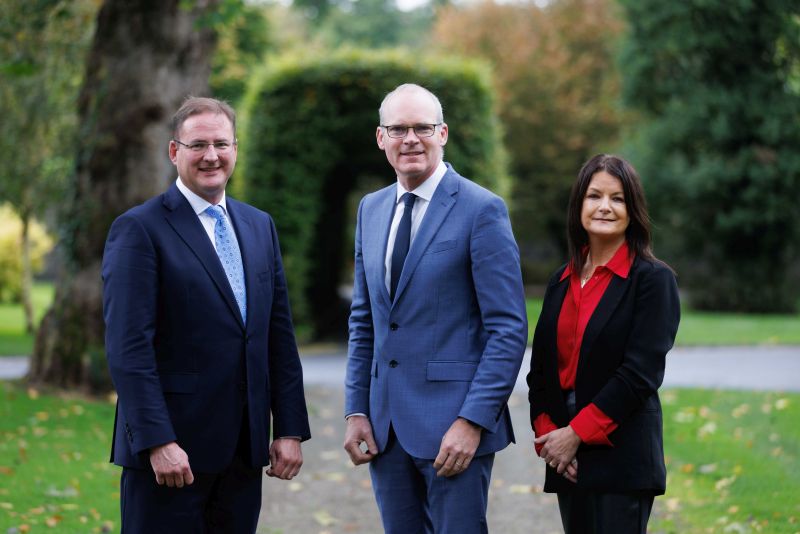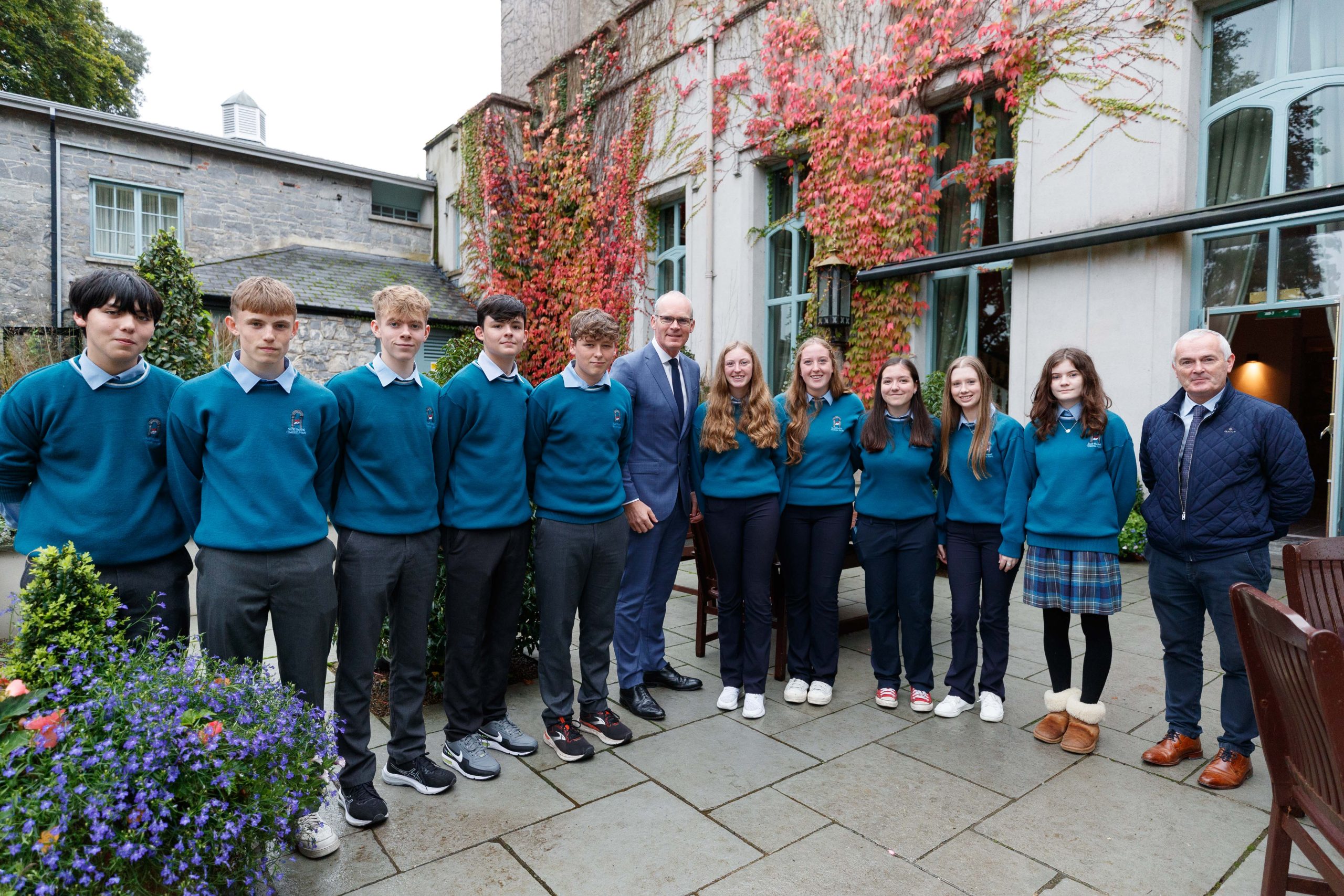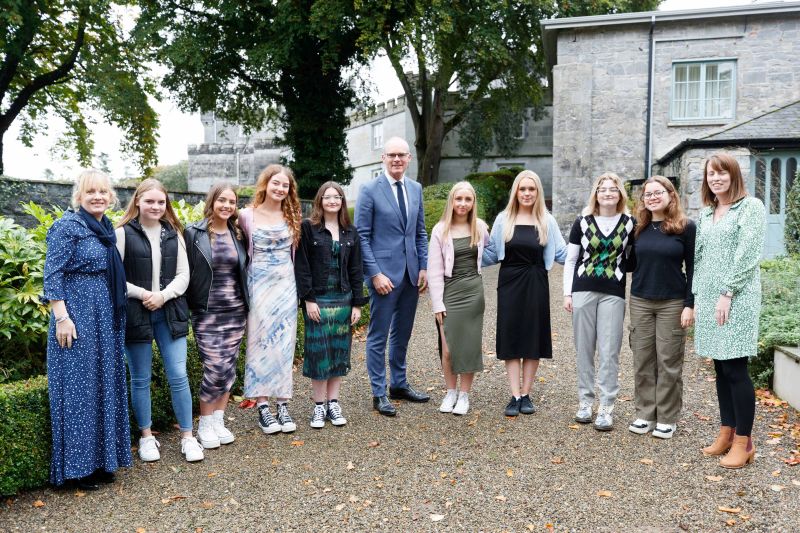
Shannon Region can play a leading role in Ireland’s next industrial transformation
Simon Coveney, TD, Minister for Enterprise, Trade and Employment pictured with Eoin Gavin, president and Helen Downes, chief executive, Shannon Chamber. Photo by Eamon Ward.
The Shannon region’s deep-rooted culture of industrial development and innovation over the last century, when coupled with the vision for the region set out in the Shannon Estuary Economic Taskforce Report, positions the region to play a leading role in Ireland’s next industrial transformation.
This was the view of the Minister for Enterprise, Trade and Employment, Simon Coveney TD., when he addressed Shannon Chamber members and guests at a luncheon in Dromoland Castle Hotel recently. The lunch, which was sponsored by The Shannon Airport Group, was attended by leaders from all sectors in the region, as well as students from two Shannon secondary schools, St. Caimin’s Community School, and St. Patrick’s Comprehensive School.
Referring to the Shannon Estuary Economic Taskforce Report, which Shannon Chamber president Eoin Gavin referred to in his opening address, Minister Coveney gave assurance that the recommendations contained in the report would feature in national strategy. The Report outlined a vision for the future economic development in the Shannon region and the region’s place in national development.
Minister Coveney said that, with a deep-water port, a longstanding maritime tradition and extensive capabilities in key areas, Shannon is very well placed to play a key role in developing offshore wind industry capable of meeting the target to position Ireland as a market leader in offshore wind.
The National Industrial Strategy for Offshore Wind, which is scheduled for publication in Q1 2024, will, for the first time, visualise what Ireland’s economy will look like in ten to fifteen years’ time when wind will provide clean, green power at affordable prices. It will also set out where industries of the future are likely to cluster. Many of these clusters will be outside Dublin and on the west coast in areas like the Shannon Estuary, providing significant employment.
In his address, Minister Coveney stated that by 2030, Ireland aims to deliver 5 gigawatts of offshore wind energy connected to the grid, increasing to 37 gigawatts by 2050, which is an extraordinary challenge considering that Ireland currently uses 5 gigawatts of power.
With development costs of 1 gigawatts of offshore wind in the region of €3million, the industry, job, and wealth creation that this industry can deliver to the Shannon Region in the decades ahead is enormous and this is something that Shannon Chamber president emphasised at the luncheon.
“As an active member of the Atlantic Economic Corridor (AEC) Business Forum, we were one of a number of Chambers that contributed to the AEC Submission to the Draft Offshore Renewable Energy Development Plan (OREDP) 11 in April,” he said.
“We have consistently pointed out that the AEC region, on and offshore, is the ideal location in Europe for the production of clean energy. Having voiced this opinion in a number of submissions over the years, our key asks in this latest submission were that Ireland needs a dedicated delivery agency with the assets and resources to realise the offshore development opportunity, and a clear action plan, responsibilities, timelines, and deliverables.
“This is a theme that came through at the S4 conference during our inaugural sustainability week. Our ask as a Chamber is that the recommendations of the Shannon Estuary Economic Task Force become part of Government policy and are implemented, which is a critical outcome for any such Task Force,” he added.
In thanking Minister Coveney for taking the time to address members, Shannon Chamber president Eoin Gavin took the opportunity to highlight a number of issues impacting Chamber members, most notably the need for Government support, via the Urban Regeneration and Development Fund (URDF), to enable the first phase of the Shannon Town Centre Masterplan, the OneShannonHub, to be delivered, and the urgent need to address the housing shortage. He called for inter-departmental collaboration where the solutions to burning platforms for business need to be delivered and, or, solved by multiple Departments.
Mary Considine, CEO, The Shannon Airport Group, and a member of the Shannon Estuary Economic Task Force, also thanked Minister Coveney for the consideration being given to the recommendations of the Report.
She also referred to the support given to Shannon Airport throughout the pandemic, including temporary inclusion in the Regional Airports Programme. The benefit of this investment is now being manifest and has been instrumental in getting the airport to where it is today, with more people now using the airport than pre Covid.
She also thanked the business community throughout the region for their support and stated that there is now more capacity in the marketplace than pre Covid.

Pupils and teacher from St. Patrick’s Comprehensive School in Shannon meet Minister

Pupils and teachers from St. Caimin’s Community School in Shannon meet Minister Coveney. Photo by Eamon Ward.
